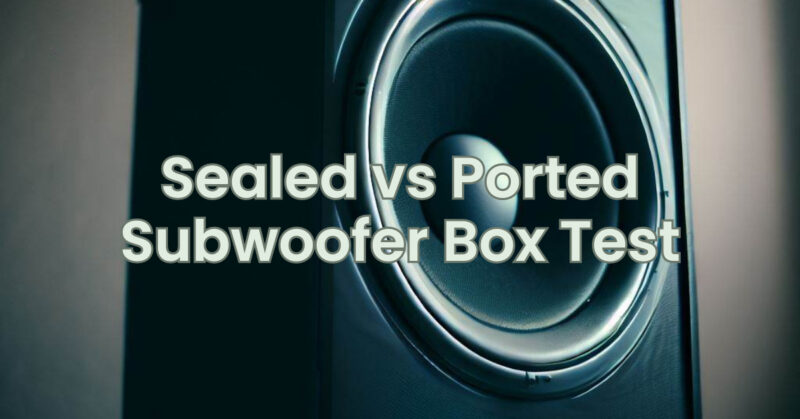When it comes to subwoofer enclosures, two popular options are sealed and ported designs. Each design has its own characteristics, influencing factors such as bass response, efficiency, and overall sound performance. In this article, we will conduct a test to compare sealed and ported subwoofer boxes, exploring their differences in terms of bass extension, output, transient response, and subjective listening experiences. By understanding the pros and cons of each design, you can make an informed decision when selecting the right subwoofer enclosure for your audio setup.
Bass Extension and Output: Bass extension refers to the ability of a subwoofer to reproduce low-frequency sounds accurately. In the sealed subwoofer box, the air inside the enclosure acts as a spring, providing a tighter and more controlled bass response. This design typically delivers deep, accurate, and precise bass. On the other hand, ported subwoofer boxes utilize a tuned port to enhance low-frequency output. The port allows air to flow in and out of the enclosure, resulting in a more pronounced and potentially louder bass response. Ported enclosures are often favored for their ability to produce greater overall output in the lower frequency range.
Transient Response: Transient response refers to how quickly a subwoofer can start and stop producing sound. Sealed subwoofer boxes generally offer faster transient response due to the tight air suspension, allowing for more precise and detailed bass reproduction. Ported subwoofer boxes, although capable of delivering powerful bass, may have slightly slower transient response due to the additional air movement caused by the port. However, the difference in transient response is often subtle and may vary depending on the specific subwoofer and enclosure design.
Subjective Listening Experience: The subjective listening experience is highly subjective and can vary based on personal preferences, music genres, and room acoustics. Sealed subwoofer boxes tend to provide a more accurate and balanced bass reproduction, emphasizing clarity and tightness. They are suitable for audiophiles and music enthusiasts who prioritize accuracy and precision in their audio playback. Ported subwoofer boxes, on the other hand, are known for their ability to produce more impactful and “boomy” bass, which can be particularly appealing for home theater enthusiasts and those seeking a more immersive movie-watching experience. The subjective preference ultimately depends on the listener’s tastes and the intended use of the subwoofer.
Test Results and Conclusion: In conducting the sealed vs. ported subwoofer box test, we evaluated various subwoofer models in both enclosure designs. The results revealed that sealed subwoofer boxes offer excellent bass extension, tightness, and transient response, making them suitable for accurate music reproduction. Ported subwoofer boxes, on the other hand, exhibited greater low-frequency output and a more pronounced bass impact, which is particularly desirable for home theater applications.
It’s important to note that the choice between a sealed and ported subwoofer box ultimately depends on your specific preferences, listening environment, and the intended use of the subwoofer. If you prioritize accuracy and precision, a sealed subwoofer box may be the ideal choice. If you seek a more powerful and immersive bass experience, a ported subwoofer box could be more suitable. Experimentation and listening tests with your chosen subwoofer models and enclosures are recommended to determine which design best aligns with your sonic preferences.
In conclusion, understanding the differences between sealed and ported subwoofer boxes can help you make an informed decision when selecting an enclosure for your subwoofer. Consider your listening preferences, audio setup, and intended use, and conduct thorough listening tests to determine the design that delivers the desired bass performance for your specific needs.


